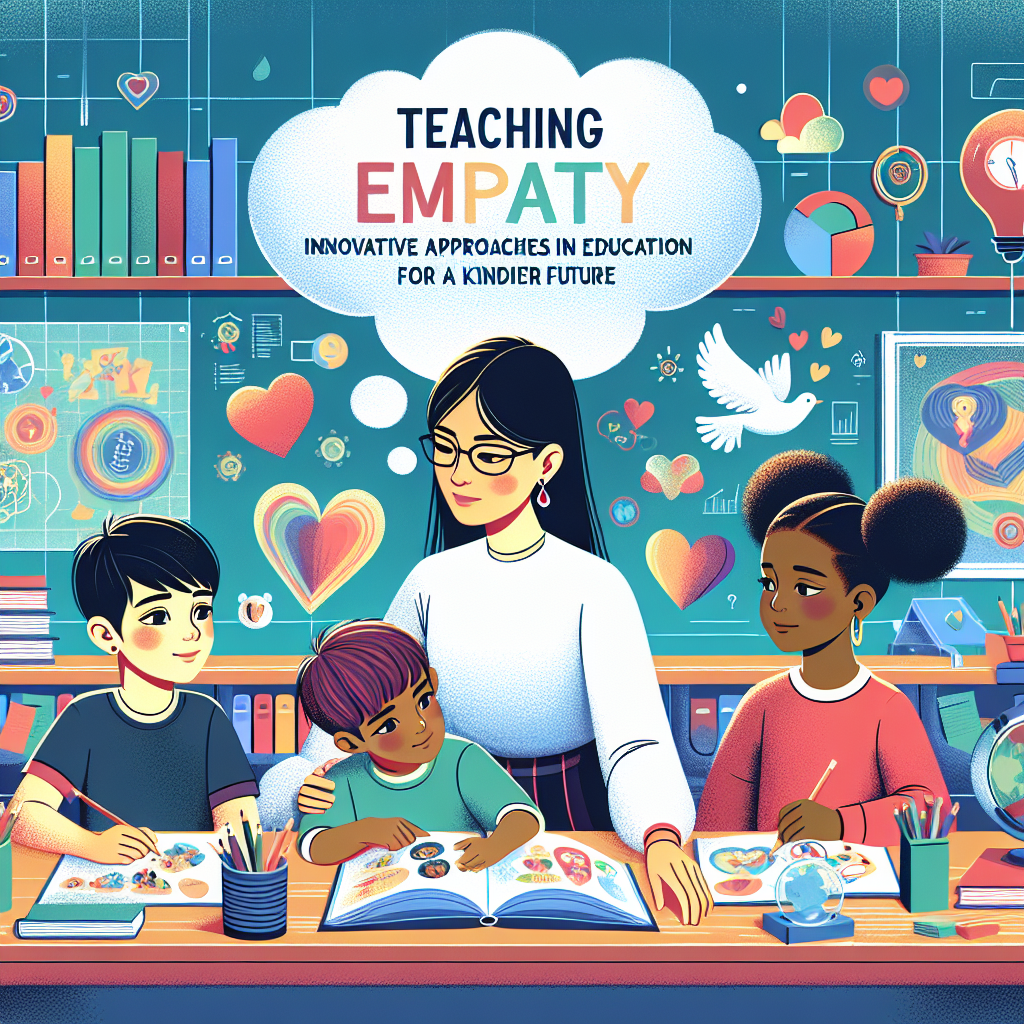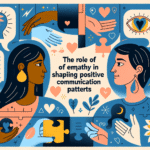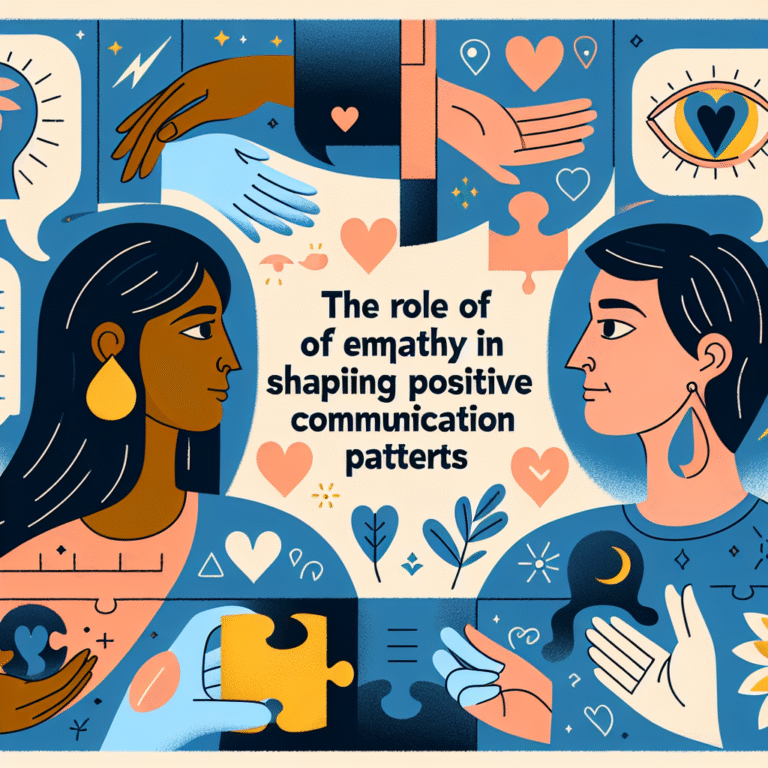
Introduction
In a world increasingly marked by division and conflict, the ability to empathize has never been more essential. Teaching Empathy: Innovative Approaches in Education for a Kinder Future explores how educators can cultivate this vital skill in classrooms worldwide. Empathy is not merely an emotional response; it is a practice that can foster understanding and connection between individuals. As we delve deeper into innovative teaching methods, we will uncover transformative strategies that not only promote empathy but also pave the way for a kinder, more inclusive society.
Why Empathy Matters
Empathy—the capacity to understand and share the feelings of another—serves as the backbone of emotional intelligence. It plays a critical role in building relationships, effective communication, and conflict resolution. Studies have shown that a lack of empathy can lead to various societal issues, including bullying, discrimination, and mental health challenges. Hence, incorporating empathy into educational frameworks is more than just a nice-to-have; it’s an essential part of preparing students to be compassionate citizens in a global community.
Innovative Approaches to Teaching Empathy
1. Storytelling as a Tool for Connection
Storytelling has long been a vehicle for imparting lessons and cultural values. When students engage with narratives that explore diverse perspectives, they develop a deeper understanding of the human experience. A captivating approach involves using literature that represents various backgrounds. For instance, reading books like "The Hate U Give" by Angie Thomas allows students to grapple with complex social issues while fostering empathy.
Case Study: The “Reading for Empathy” Program
The “Reading for Empathy” program in the San Francisco school district has yielded impressive results. By incorporating literature discussing themes of social justice, students reported a 30% increase in empathy levels as measured by pre- and post-program surveys. Teachers observed improved classroom interactions and a significant decrease in instances of bullying.
2. Experiential Learning through Role-Playing
Role-playing is another innovative method for teaching empathy. By stepping into someone else’s shoes, students can enact scenarios that challenge their assumptions and expand their emotional understanding. For example, schools can create simulations that reflect real-world conflicts—like resource scarcity or cultural misunderstandings.
Case Study: The “Empathy in Action” Workshop
A community-focused workshop known as "Empathy in Action" engages students in role-playing exercises centered around social issues such as homelessness or systemic racism. In a recent implementation, students who participated reported increased awareness and compassion, demonstrating a profound change in their perceptions about difficult topics.
3. Incorporating Arts and Creative Expression
The arts have a unique power to evoke emotions and create connections among people. Integrating visual arts, drama, and music into the curriculum can facilitate empathy-building in students. For example, engaging in collaborative art projects allows students to express feelings while connecting with their peers.
Case Study: Art for Empathy Initiative
A pilot program, "Art for Empathy," implemented in several schools across the East Coast led students through various creative projects exploring themes like identity and belonging. Feedback indicated that 85% of participants felt more connected to their classmates after the initiative, highlighting how the arts can bridge emotional gaps.
| Innovation | Impact | Statistic |
|---|---|---|
| Storytelling | Increased understanding of diverse perspectives | 30% empathy increase post-program |
| Role-Playing | Improved emotional awareness | High student comprehension of social issues |
| Arts Integration | Enhanced peer connections | 85% felt more connected post-project |
4. Use of Digital Platforms
In an increasingly digital world, online educational platforms can serve as effective tools for teaching empathy. Using social media simulations or virtual reality experiences, educators can allow students to explore different lifestyles and viewpoints without leaving the classroom. This technology can create a safe space for fostering difficult conversations.
Case Study: Virtual Empathy Project
A project where students interacted in a virtual setting designed to mimic real-world social interactions showed promising results. Students involved in the program displayed a 40% increase in empathetic responses when interacting with others online, evidencing the potential of technology in empathy education.
5. Mindfulness and Emotional Regulation
Mindfulness practices, such as meditation and reflective journaling, are vital in grounding students before engaging in empathy-building exercises. When students learn to manage their own emotions, they are better positioned to understand the feelings of others.
Case Study: Mindful Schools Program
The Mindful Schools program integrates mindfulness practices into elementary education. Schools implementing this curriculum observed a measurable decrease in behavioral issues, with a corresponding 25% rise in students’ empathy scores as measured by standardized assessments.
The Role of Educators
Teachers serve as facilitators in the journey of teaching empathy. It is crucial for educators to model empathetic behaviors themselves. Professional development programs focused on emotional intelligence can provide educators with the tools they need to foster empathy in their classrooms effectively.
Strategies for Educators
Model Empathetic Behavior: Educators should embody empathy by listening actively and responding thoughtfully to students.
Create a Safe Space: Foster a classroom environment where students feel safe expressing their thoughts and feelings.
Encourage Collaboration: Facilitate group work and cooperative projects that require students to rely on one another’s strengths and build community.
- Implement Feedback Loops: Regular check-ins with students can promote a culture of empathy, where feelings and insights are openly exchanged.
Conclusion
Teaching Empathy: Innovative Approaches in Education for a Kinder Future is not merely about adding new methods to the curriculum; it’s about transforming the educational landscape for future generations. By emphasizing emotional intelligence, creativity, and collaboration, educators can cultivate a kinder, more understanding world.
As we adopt these innovative approaches, remember that every small step in teaching empathy contributes to a larger movement toward a compassionate future. Let’s empower students today to become the compassionate leaders of tomorrow.
FAQs
Why is empathy important in education?
Empathy fosters understanding, reduces bullying, and cultivates a sense of community among students.How can storytelling enhance empathy?
Storytelling helps students connect with diverse experiences, promoting broader perspectives and understanding.What role does technology play in teaching empathy?
Digital platforms can simulate real-world interactions and create safe environments for exploring various viewpoints.How can teachers model empathy?
Educators can model empathy by actively listening, validating students’ feelings, and creating a supportive classroom environment.- Are there quantifiable benefits from teaching empathy?
Yes, studies indicate increased levels of empathy, improved social interactions, and decreased behavioral issues in students who engage with empathy-building programs.
This article provides valuable insights into Teaching Empathy: Innovative Approaches in Education for a Kinder Future. By implementing these strategies, educational leaders and teachers can contribute to shaping a more compassionate generation.

















